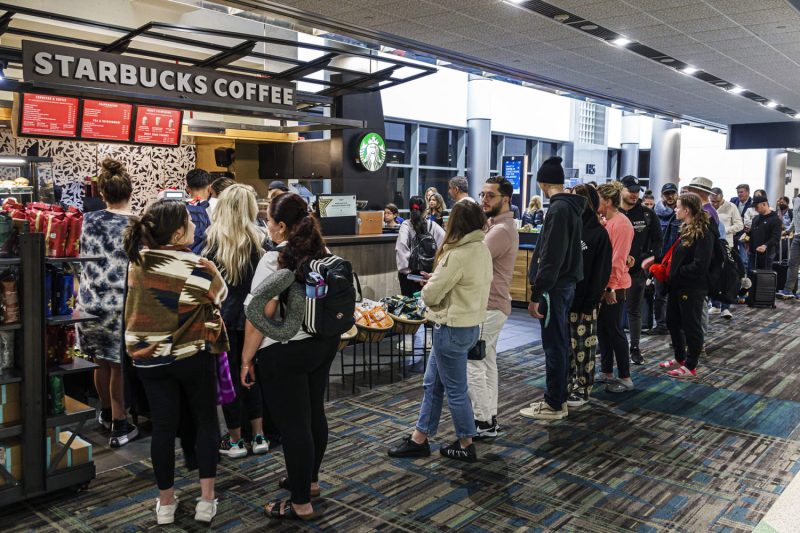In recent years, Starbucks has been facing a significant challenge in addressing long lines at its airport cafes. The company, known for its premium coffee and exceptional customer service, has been struggling to keep up with the high demand and crowded spaces, especially in busy airport locations. While Starbucks has implemented various strategies to tackle this issue, there is still room for improvement.
One of the key factors contributing to the long lines at Starbucks airport cafes is the limited space available for customers to wait and place their orders. Unlike traditional stand-alone stores, airport cafes often have smaller footprints due to the restrictions imposed by the airport environment. This lack of space leads to congestion and frustration among customers, leading to longer wait times and a subpar experience.
To address this challenge, Starbucks could explore redesigning its airport cafes to optimize space utilization. By reimagining the layout of the cafes, Starbucks could create more efficient queues, designated waiting areas, and self-service options to streamline the ordering process. Additionally, leveraging technology such as mobile ordering and payment kiosks could help reduce congestion at the front counter and speed up service for customers.
Another critical aspect that Starbucks should focus on is staffing levels and training at its airport cafes. Adequate staffing is essential to ensure smooth operations and timely service, especially during peak hours. By analyzing customer traffic patterns and adjusting staffing levels accordingly, Starbucks can better meet the demand and minimize wait times. Moreover, ongoing training for baristas on efficiency, customer service, and conflict resolution can enhance the overall experience for customers and mitigate the impact of long lines.
Furthermore, Starbucks should prioritize communication and transparency with customers regarding wait times and service expectations. By implementing digital signage, announcements, and updates on wait times, Starbucks can manage customer expectations and reduce frustration. Creating a seamless and positive customer experience, even during busy periods, is crucial for retaining loyal customers and maintaining the brand’s reputation for quality and efficiency.
Additionally, Starbucks could explore partnerships with airport authorities and other businesses to develop innovative solutions for addressing long lines at its cafes. Collaborating with airport operators to optimize the layout of cafe spaces, implementing pre-ordering options for travelers, or offering exclusive deals for airline passengers could create a unique and engaging experience for customers while reducing congestion.
In conclusion, Starbucks faces a significant challenge in fixing long lines at its airport cafes, but there are several strategies the company can employ to improve the situation. By focusing on space optimization, efficient staffing, technology integration, customer communication, and strategic partnerships, Starbucks can enhance the customer experience, streamline operations, and mitigate the impact of long lines. Embracing innovation and continuous improvement will be key to overcoming this challenge and maintaining Starbucks’ position as a leader in the coffee industry.

